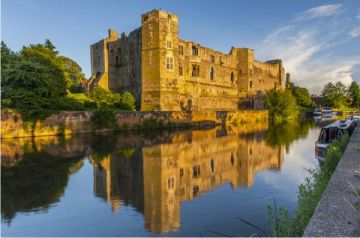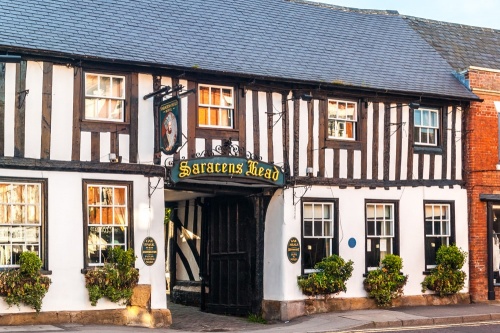
The roots of Southwell go back into the Saxon period. In the 10th century, the manor was given to Oskatel, the Archbishop of York. Oskatel established a college of secular canons at Southwell, and these canons administered the region like an independent form of government.
Southwell Minster
In 1108 Archbishop Thomas of York began building a Romanesque cathedral at Southwell. The result was the superb Norman church known today as Southwell Minster. The early 12th-century architecture has remained largely unaltered, making Southwell Minster one of the best examples of Norman architecture in Britain. Historical treasures inside the Minster include the Southwell Tympanum, a 9th-century lintel stone carved with figures of the archangel Michael fighting a serpent, while King David wrestles with a lion.
Another historical treasure is the 13th-century pulpitum screen separating the nave and chancel. The stone screen is a stunning example of Early English sculpture, carved with intricate foliage patterns, faces of humans, grotesque creatures and strange beasts. Look for a Green Man, or wild man of the woods amid the foliage. There is more superb 13th-century carving in the chapter house.
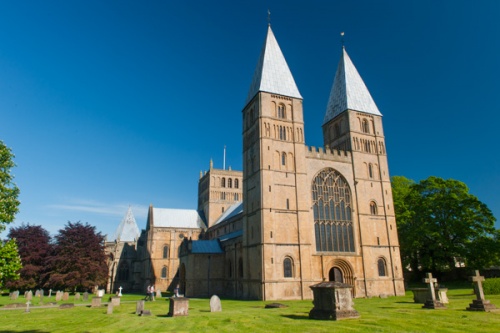
Bishop's Palace
Just south of the Minster church is Bishop's Manor, the official residence of the Bishop of Southwell. Beside it are the ruins of a 14th-century Bishop's Palace begun by Archbishop Alexander Neville in 1379 and finished by Archbishop Arundel around 1396. The Palace was extended by Archbishop John Kemp in 1426 and again for Archbishop Rotherham in 1490.
Cardinal Wolsey spent the last summer of his life here in 1530. In 1645 King Charles I stayed at the Palace following his defeat at the Battle of Naseby. In 1647 the Scots Commissioners occupied the Palace and left it largely in ruins.
In the late 18th century the Great Hall was transformed into a house. That house was incorporated into a new residence known as Bishop's Manor in 1905. The remains of the medieval Palace consist of roofless ruins around a square courtyard. Palace features include a pair of garderobe towers, one featuring a spiral stair and an unusual four-seat radial seat.
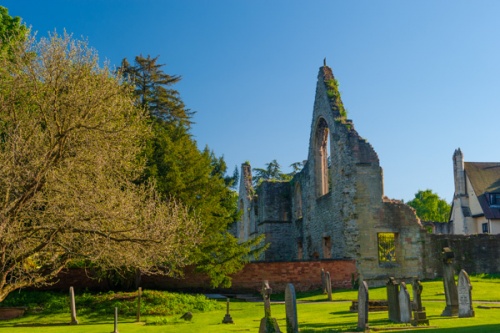
Southwell Workhouse
On the outskirts of Southwell stands Southwell Workhouse, a complex of buildings erected in 1824 where poor families were housed in exchange for back-breaking, tedious work. Conditions in the Workhouse were intentionally harsh, to discourage people from relying on them.
Families were broken up when entering the Workhouse, and men, women and children were expected to work at dull, monotonous, and strictly controlled activities such as breaking rocks for road construction or picking apart strands of rope by hand.
The regimen of hard work was supposed to convert the 'idle poor' to a more upright lifestyle. Life in the workhouse was regimented and strictly controlled, and transgressions were harshly punished. The Workhouse was going to be converted into flats in 1997 when the National Trust stepped in to preserve the site.
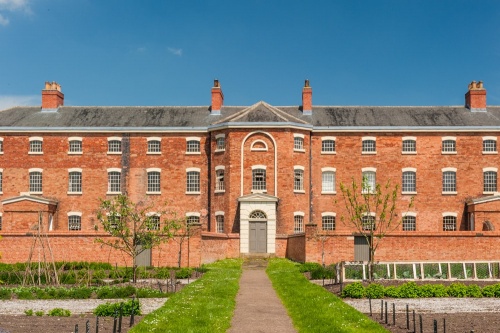
Saracen's Head
On the north-west side of the Market Place, almost opposite Southwell Minster, is this attractive timber-framed inn, built around 1460 and incorporating an early 19th-century Assembly Rooms. It was here at the Saracen's Head that King Charles I spent his final few hours of freedom before he surrendered to the Scots in May 1646.
King Charles and his army suffered a severe setback at Naseby in June 1646. He asked a French diplomat named Montreuil to arrange negotiations with the Scottish army, which was then laying siege to Newark. He travelled to Southwell only to find Montreuil absent, so he stayed at the Saracen's Head (then called the King's Head) and carried on negotiations with the Scottish Commissioners by himself. The result was that King Charles surrendered to the Scottish army, which then handed him over to Parliament.
Cranfield House
On Church Street, set well back from the road, is Cranfield House, built in 1709 for George Mompesson. The house is very similar in style to Mompesson House on the Cathedral Close in Salisbury, built by another member of the same family in 1701. Cranfield House is one of nine former prebendal houses once attached to Southwell Minster.
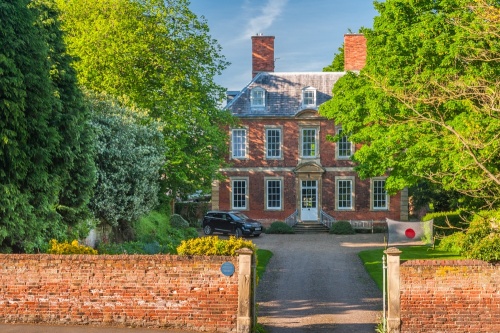
Vicar's Court
Also on Church Street is a complex of attractive late 18th-century red-brick buildings around a courtyard. The origins of this complex of buildings go back to 1379 when a College was founded for the Vicars Choral of Southwell Minster, based around a quadrangle. The quadrangle, in turn, was built on the site of a Roman villa. The Vicars Choral deputised for the canons of Southwell Minster during services.
In 1689 the Canon-in-Residence was William Mompesson, who had been the Rector of Eyam in Derbyshire during the terrible outbreak of plague in 1665/6. Mompesson famously convinced the villagers of Eyam to cut themselves off from the outside world to prevent the plague from spreading.
Around 1690 the medieval collegiate dining hall was torn down and replaced with The Residence for William Mompesson. In 1779 the remaining residences of the Vicars Choral were rebuilt, and Residence House restored. Today the Dean of Southwell lives in The Residence and Canons and the Rector Chori occupy the other four houses around the courtyard.
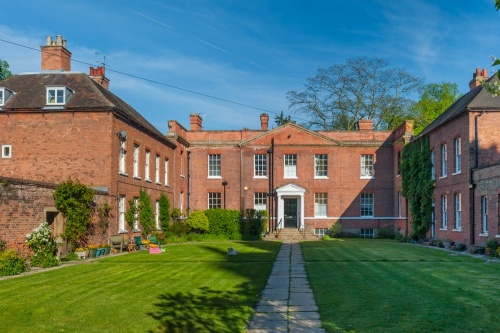
Heritage Trails
The Southwell Town Council publishes several Heritage Trails, taking visitors through historic places in the town and the surrounding area. One trail follows in the footsteps of John Becher, a clergyman and close friend of Lord Byron. Becher came to Southwell in 1792 to act as a clergyman at the Minster. He became interested in social reform and was the moving force behind the Workhouse.
Another trail highlights Southwell's links to Bramley apples. The story of the Bramley apple began with a local girl named Mary Ann Brailsford, took some pips from apples her mother was preparing and planted them in a flower pot. One of the pips thrived so well that she transplanted it into her garden.
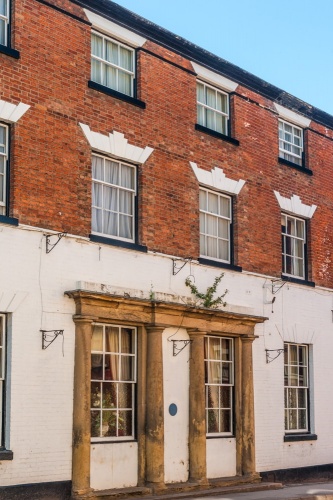
When the tree grew large enough to bear fruit it produced an unusual variety of apple that has become one of Britain's favourites, the Bramley. The Bramley Apple Heritage Trail takes in Bramley Tree Cottage on Church Street, where the original Bramley apple tree still grows in the back garden.
The Town Centre Trail takes in Bramley Tree Cottage as well as Burgage Manor, where Lord Byron and his mother lived between 1804-1806. It also includes the Georgian Theatre (now the Old Theatre Deli) in the Old Market Place. Lord Byron took part in amateur theatrical performances here.
About Southwell
Address: Southwell,
Nottinghamshire,
England
Attraction Type: Town
Location: On the A612, seven miles west of Newark-on-Trent
Website: Southwell
Location map
OS: SK697540
Photo Credit: David Ross and Britain Express
HERITAGE
 We've 'tagged' this attraction information to help you find related historic attractions and learn more about major time periods mentioned.
We've 'tagged' this attraction information to help you find related historic attractions and learn more about major time periods mentioned.
Find other attractions tagged with:
NEARBY HISTORIC ATTRACTIONS
Heritage Rated from 1- 5 (low to exceptional) on historic interest
Southwell Minster - 0.3 miles (Cathedral) ![]()
Southwell Workhouse - 0.9 miles (Historic Building) ![]()
Elston Chapel - 5.3 miles (Historic Church) ![]()
Hawton, All Saints Church - 5.9 miles (Historic Church) ![]()
Kelham Hall - 6 miles (Historic House) ![]()
Newark Castle - 6.1 miles (Castle) ![]()
Newark on Trent, St Mary Magdalene Church - 6.3 miles (Historic Church) ![]()
Screveton, St Wilfrid's Church - 6.9 miles (Historic Church) ![]()



